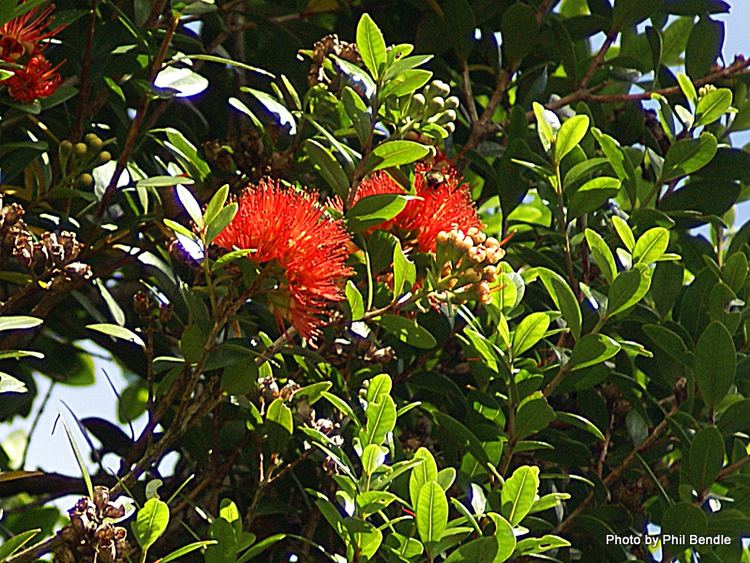Rank Species | ||
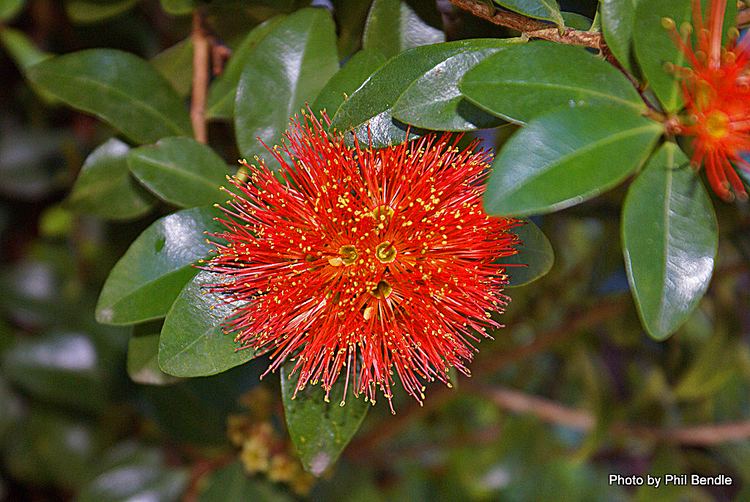 | ||
Similar Metrosideros perforata, Metrosideros carminea, Metrosideros diffusa, Metrosideros colensoi, Metrosideros robusta | ||
Metrosideros fulgens (scarlet rātā, rātā vine or in Māori akatawhiwhi) is a forest liane or vine endemic to New Zealand. It occurs in coastal and lowland forest throughout the North Island, on the west coast of the South Island and on the Three Kings Islands north of Cape Reinga. It is one of a number of New Zealand Metrosideros species which live out their lives as vines, unlike the northern rata (M.robusta), which generally begins as a hemi-epiphyte and grows into a huge tree. Scarlet rātā is one of the better-known species of rātā vines, because it flowers in autumn or winter, and is often highly visible on well-lit host trees along forest roads, with vibrant displays of large red flowers (sometimes orange or yellow) that rise above the forest canopy.
Contents
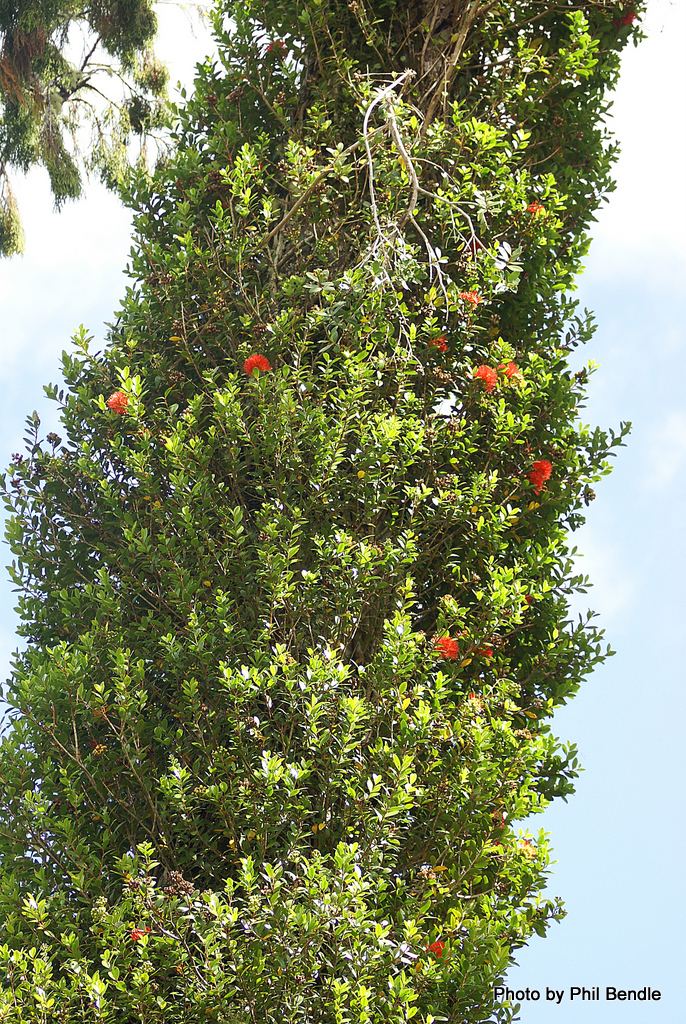
Description
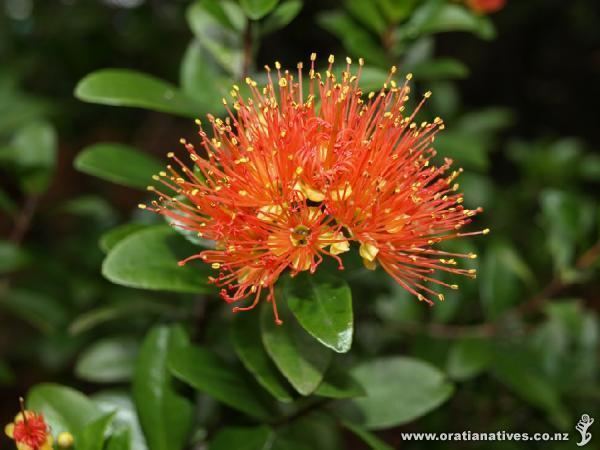
Metrosideros fulgens prefers warm moist habitats and grows up to 10m long or more, with the main stem up to 10 cm. or more in diameter. It climbs in the same way as ivy, sending out short adventitious roots to adhere to the trunks of host trees, penetrating and clinging to rough surfaces. The climbing shoots of juvenile plants are designed to grow rapidly and extend the length of the plant. The short clinging roots usually die after about a year, so that when the vine is mature, the thick, twisted, rope-like stems hang free from the host like thick, sometimes twisted ropes, with red-brown flaky bark. The leaves are mostly rounded at the tip. Flowering is from autumn to spring, with seed capsules taking about a year to ripen.
Cultivation
There are several cultivars of M. fulgens available, mostly selected for their flower colours.
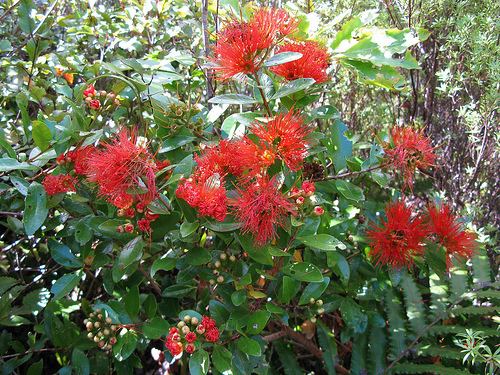

In addition to the above cultivars, it is also possible to by regular forms of M. fulgens through specialist plant nurseries.
